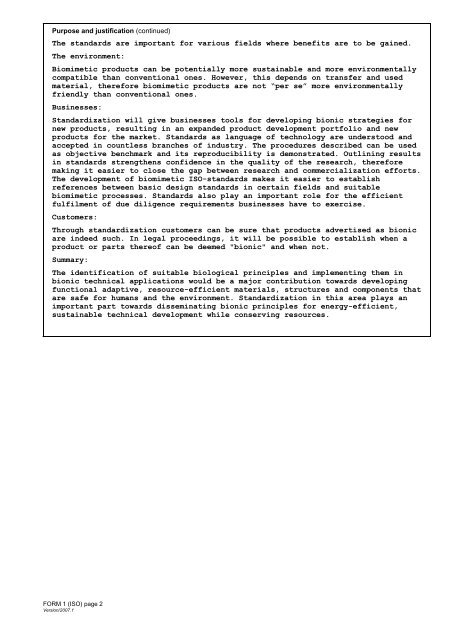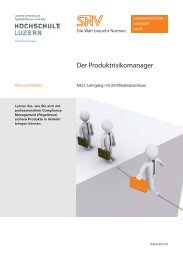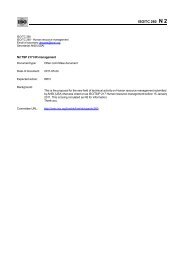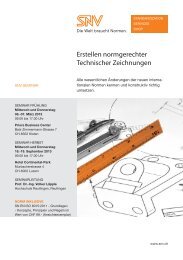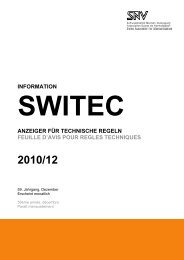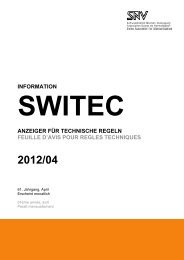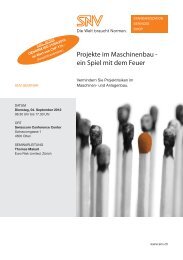ISO/TS/P 222 Biomimetics - SNV
ISO/TS/P 222 Biomimetics - SNV
ISO/TS/P 222 Biomimetics - SNV
You also want an ePaper? Increase the reach of your titles
YUMPU automatically turns print PDFs into web optimized ePapers that Google loves.
Purpose and justification (continued)<br />
The standards are important for various fields where benefits are to be gained.<br />
The environment:<br />
Biomimetic products can be potentially more sustainable and more environmentally<br />
compatible than conventional ones. However, this depends on transfer and used<br />
material, therefore biomimetic products are not “per se” more environmentally<br />
friendly than conventional ones.<br />
Businesses:<br />
Standardization will give businesses tools for developing bionic strategies for<br />
new products, resulting in an expanded product development portfolio and new<br />
products for the market. Standards as language of technology are understood and<br />
accepted in countless branches of industry. The procedures described can be used<br />
as objective benchmark and its reproducibility is demonstrated. Outlining results<br />
in standards strengthens confidence in the quality of the research, therefore<br />
making it easier to close the gap between research and commercialization efforts.<br />
The development of biomimetic <strong>ISO</strong>-standards makes it easier to establish<br />
references between basic design standards in certain fields and suitable<br />
biomimetic processes. Standards also play an important role for the efficient<br />
fulfilment of due diligence requirements businesses have to exercise.<br />
Customers:<br />
Through standardization customers can be sure that products advertised as bionic<br />
are indeed such. In legal proceedings, it will be possible to establish when a<br />
product or parts thereof can be deemed "bionic" and when not.<br />
Summary:<br />
The identification of suitable biological principles and implementing them in<br />
bionic technical applications would be a major contribution towards developing<br />
functional adaptive, resource-efficient materials, structures and components that<br />
are safe for humans and the environment. Standardization in this area plays an<br />
important part towards disseminating bionic principles for energy-efficient,<br />
sustainable technical development while conserving resources.<br />
FORM 1 (<strong>ISO</strong>) page 2<br />
Version/2007.1


